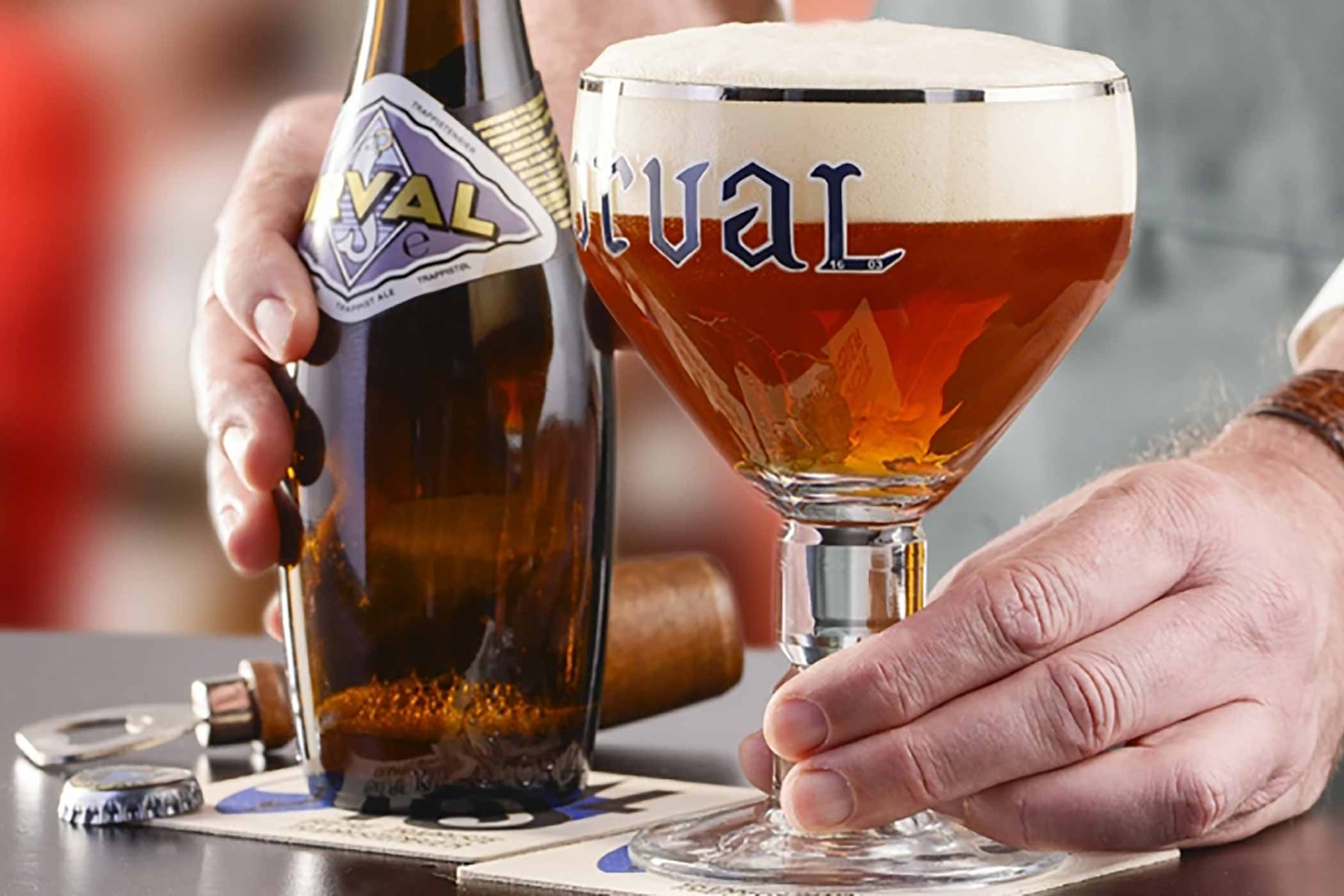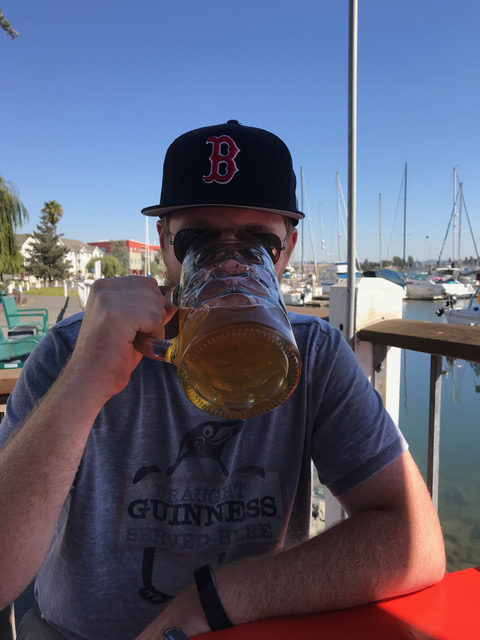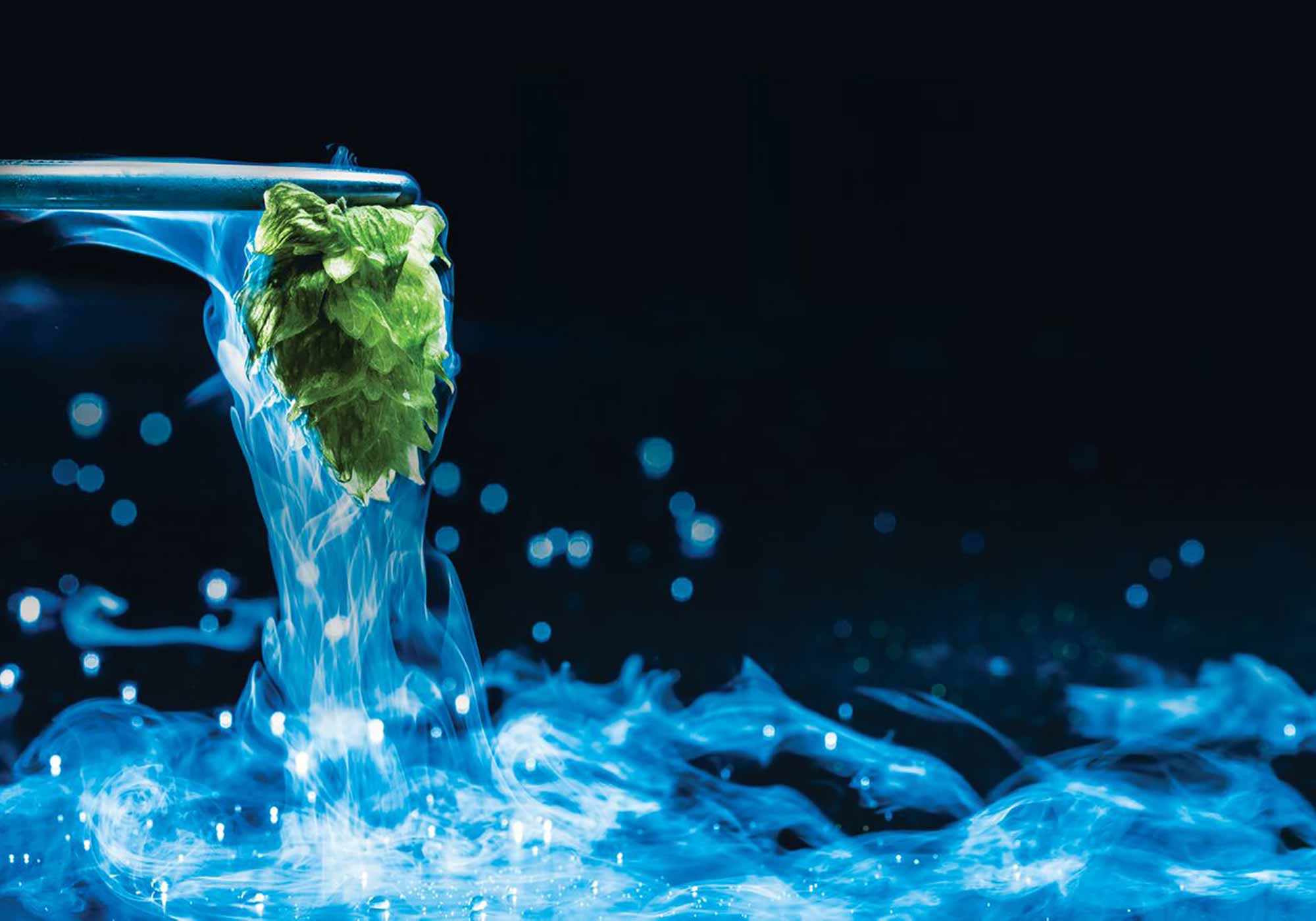Shop
Everything You Need to Know About Orval Day 2022
One day to drink the best Belgian pale ale in the world!
Beer holidays have become like coveted traditions. In the fall, we wait with bated breath for International Zwanze Day for a chance to taste the limited Zwanze release from Cantillon. Similarly in the spring, we celebrate Orval Day (this year taking place on Saturday, May 21st, 2022), a holiday dedicated to the one and only Orval.
A Trappist Belgian pale ale produced at the Brasserie d’Orval within the walls of the Abbaye Notre-Dame d’Orval in the Gaume region of Belgium, Orval became one of the most renowned beers in the world.
But what makes this one Trappist beer special enough to deserve a holiday all to itself?
We have the answers.
It All Starts with Trappist Beer

Photography courtesy of The Westvleteren abbey
Considered a Trappist beer, Orval enjoys an aura of enchantment that surrounds these Belgian beers historically brewed by monks. Complex, flavorful, and a bit mysterious, Trappist beers have long been revered by beer fans around the world, developing an almost cult-like following.
But what makes Trappist beers so special?
For one, Trappist beers must meet a handful of requirements set by the International Trappist Association in order to display the coveted Authentic Trappist Product label including:
The beer must be made in the immediate surroundings of the abbey (on-site)
Production must be carried out or overseen by the monks or nuns
Profits should be used to support the abbey, for purposes of solidarity within the Trappist Order, or for development projects or charity
Beyond that, Orval stands apart from other Trappist beers in a number of ways. Produced at the Brasserie d’Orval (the Orval Brewery), this unique beauty features Brettanomyces bruxellensis, a yeast strain from the Senne valley near Brussels, Belgium. Additionally, Brasserie d’Orval dry-hops Orval, something not typically seen in Trappist beers.
Orval also stands apart from other Trappist breweries by boasting the only female brewmaster, Anne-Françoise Pypaert, who worked her way up from the bottom over the years.
Plus, Orval’s incredible history that adds to the beer’s allure.
Editor’s Note: It should be noted that there are a handful of Trappist breweries that produce beer away from the grounds of their associated abbey, and therefore they cannot display the Authentic Trappist Product label. These beers are still considered Trappist beers.
A Brief History of Brasserie d’Orval
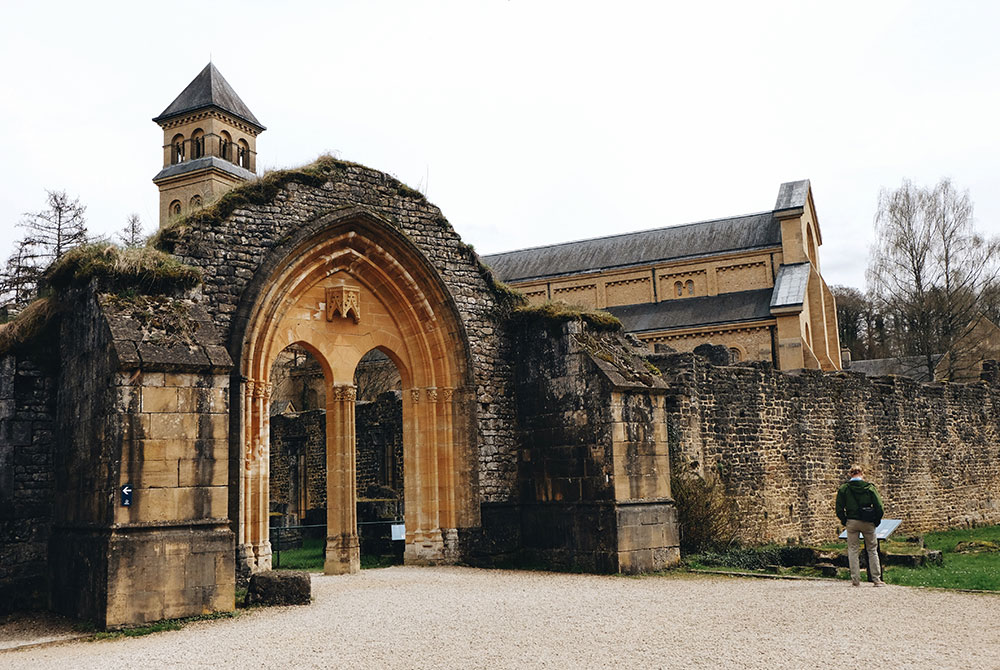
Photography courtesy of Brasserie d’Orval
As with most Old World history, it can be hard to distinguish between tall tales, accurate stories, and mashups of the two. According to legend, while Matilda of Tuscany visited the site of the current Brasserie d’Orval, she dropped her wedding ring into a spring. After praying for its return, a trout surfaced with the ring in its mouth, returning it to Matilda. She proclaimed that the place must be a Val d’Or, or golden valley. Thus, the legend of Orval. To this day, the brewery pays homage to this account on its label, where a fish is rising from the water with a golden ring firmly in its mouth.
In a place as old as Europe, things like fire, war, and time also tend to play an important role in history. Built in 1070, the Abbaye Notre-Dame d’Orval, or the Orval Abbey, faced these historical factors. Destroyed during the French Revolution, the Orval Abbey remained abandoned until monks returned in the 1920s, beginning reconstruction in 1926. Architect Henri Vaes designed both the Abbey and the brewery, completed in 1931.
A year later, the brewery shipped out the first Orval beer in barrels.
How Monks Played a Role in Orval
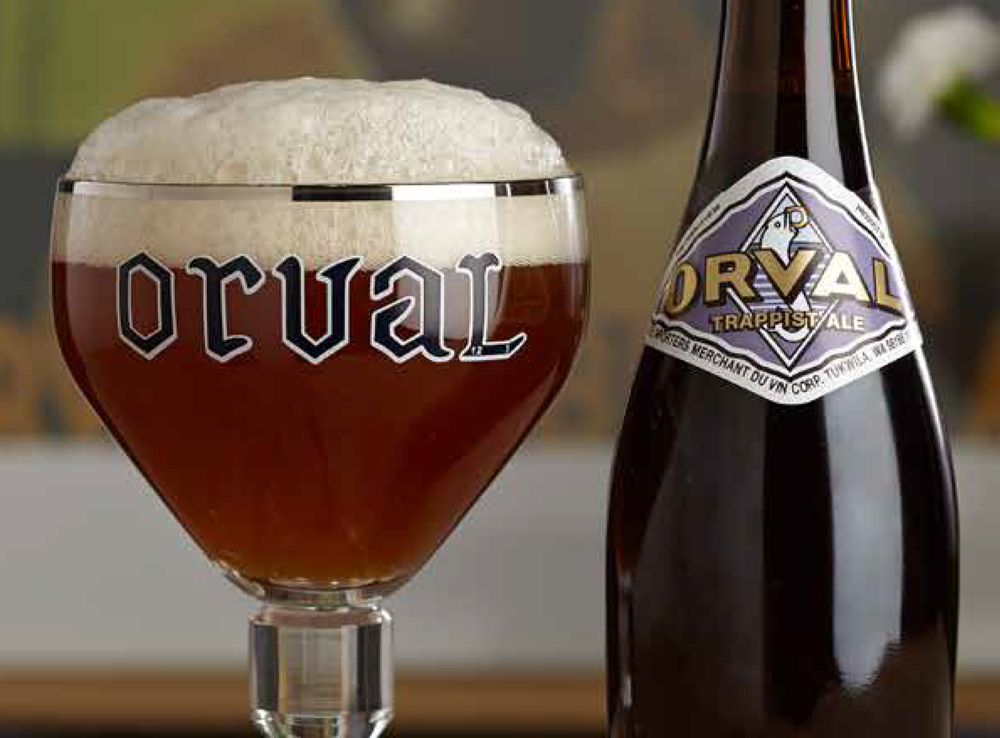
Photography courtesy of Brasserie d’Orval
It should be noted that monks don’t actually brew Orval. Rather a team of thirty-five professional brewing staff led by Brewmaster Anne-Françoise Pypaert handles the beermaking. However, the monks have always played a big role in supervising operations at the brewery.
“Our brewery has existed since 1931,” writes Brother Xavier, a monk and managing director of Brasserie d’Orval, in an open letter on their website. “From the outset, our beer production was entrusted to secular employees in the region, because the monastic community at the time was primarily occupied by the work on the farm and the cheese making. Unlike at other Trappist breweries, here at Orval, monks have never been directly involved in the production of beer. The number of monks in the community is not directly related to the amount of beer produced, let alone the justification of any trade secret.”
From that perspective, even though Brasserie d’Orval boasts an incredible history, the Abbey does approach brewing in a contemporary way.
A Brief History of Orval the Beer
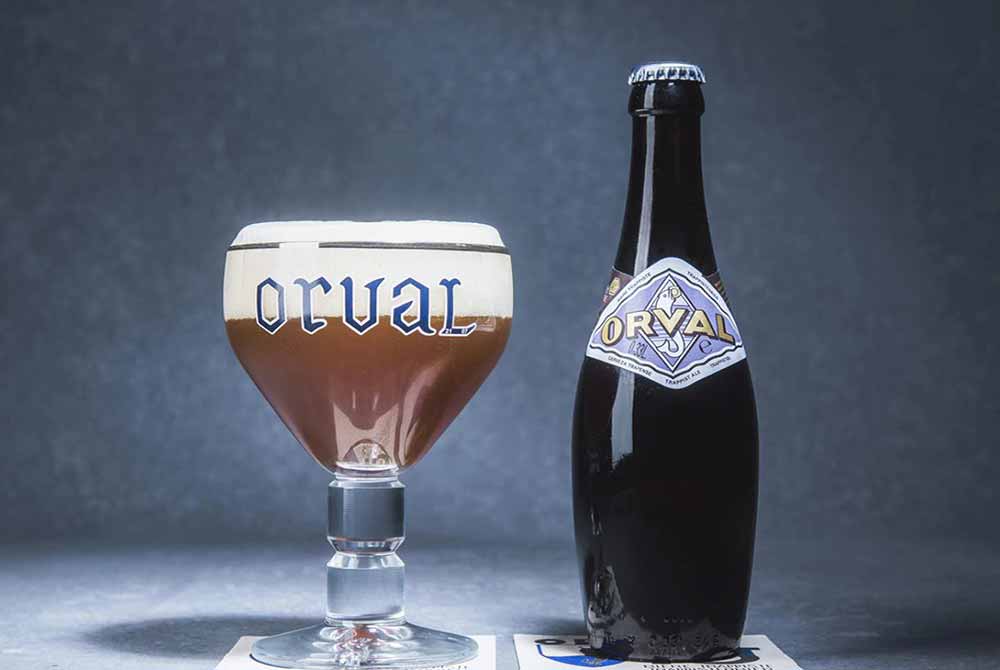
Photography courtesy of Brasserie d’Orval
Pypaert brews Orval on a completely modern system featuring stainless steel, fully automated kettles (albeit covered in a layer of copper to bring that old-school monastery feel). However, the recipe itself comes from very historic origins.
The brewery credits German brewer Hans Pappenheimer for developing the original recipe. We can thank his assistant, who studied in England, suggested the hitherto unforeseen technique of dry hopping in Trappist beers. At the time, very few brewers outside of England used that approach.
In addition to Belgian candi sugar, an evolving European malt bill, and that aforementioned Brettanomyces bruxellensis, hops are integral to this Belgian pale ale’s citrus-y yet bitter characteristics.
Currently, one can find a variety of global hops in the beer, including Hallertau-Hersbrucker from Germany, Alsace Strisselspalt from France, Styrian Golding from Slovenia, and Tomahawk from the Yakima Valley in the United States.
All this makes for a pretty bitter flavor profile (in the 32 IBU range). One that at first made this beer very polarizing.
Today, most craft beer drinkers consider Orval iconic. But much like other revered beers—such as Allagash White—Orval didn’t start out that way.
The Impact of Orval
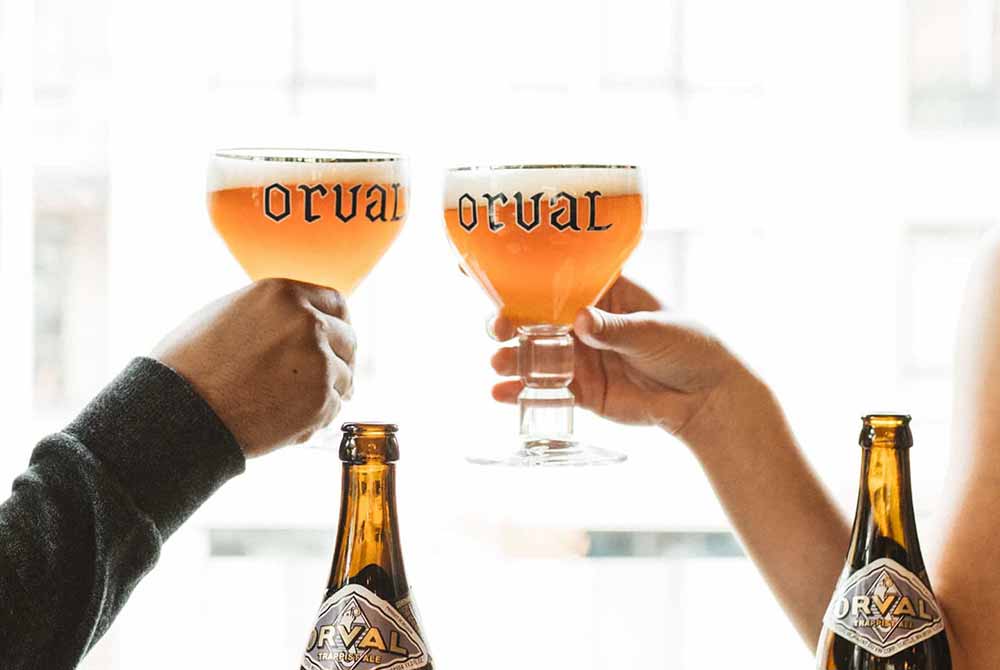
Photography courtesy of Merchant du Vin
Today, drinkers across the world seek out Orval. But the beer didn’t always have this reputation.
In 2000, Brasserie d’Orval only produced 32,000 hectoliters of its namesake beer. Not until 2015 did the brewery almost double production to 72,000 hectolitres.
In those fifteen years the popularity grew due in large part to the aforementioned stories of mysticism around Trappist beers.
Additionally, consumer preferences have changed. In the beginning of the early aughts, people didn’t like bitter beers. But today, with the rise of West Coast IPAs, American IPAs, and even hazies to some extent, bitter has become a core flavor component.
Overall, the uniqueness of this dry-hopped Belgian Trappist beer helped drive its popularity, impacting some of the world’s most renowned brewers.
Rob Tod, founder of Allagash Brewing in Portland, ME, knows a little something about trying to sell a beer style the public may not fully understand. He says that both the Orval Abbey and beer have “absolutely had an impact” in the way Allagash approaches beer. “One of the things that attracted me to Belgian brewing tradition was the amazing amount of diversity, in a pretty small geographic area,” says Tod.
From the use of Brettanomyces to the influence of dry-hopping, Tod credits Orval for the inspiration to innovate. For example, Allagash blends a small portion of Brettanomyces-dosed beer into Truepenny, a Belgian-style pilsner, before packaging. The effect enchants, and fresher the beer, the more prominent the Brett character.
Many American brewers have been drawn to experiment with Brettanomyces after encountering Orval (from Allagash to Russian River), making the American craft scene a better (and tastier) place.
The impact of this Belgian beer is simply incalculable. So for all these reasons, Orval certainly deserves its own day of celebration.
A Day of Celebration
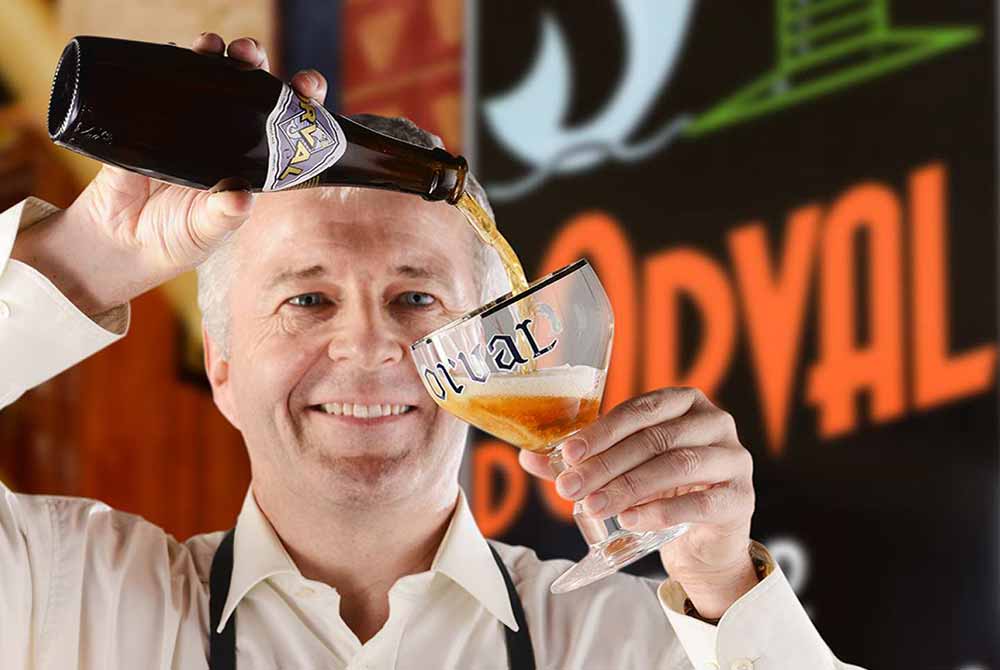
Photography courtesy of Brasserie d’Orval
Orval has a storied past, but the celebration known as Orval Day started pretty recently. It all began in 2015. That year, a store in Ohio did an Orval promotion with the apt title, “Orval Day.” According to Craig Hartinger, Marketing Director at Merchant du Vin, Orval’s U.S. importer, this little promotion “helped rejuvenate interest in Orval” state-side.
With the rising wave of American craft breweries, interest in foreign imports waned. Merchant du Vin decided to run with the idea. In 2016, the importer organized the first national Orval Day. The celebration took off. One Seattle bar went so far as to exclusively sell Orval that day. According to Hartinger, the bar ended up ordering sixty cases of the Belgian pale ale!
As an ode to Trappist ideologies, Merchant du Vin donates the proceeds of sales from each bottle sold. Every year the importer picks a different organization to support. Originally, the Merchant du Vin donated fifty cents per bottle (based on U.S. sales) to Map International, an organization dedicated to providing medicine and health supplies to people in need. In 2022, Merchant du Vin plans to contribute to the National Forest Foundation.
Held annually in late March, Orval Day has been a resounding success. Merchant du Vin estimates around 2,100 accounts in the U.S. participate each year. Due to the COVID-19 pandemic, Merchant du Vin delayed Orval Day in 2020, but this year the celebration returns.
Everything You Need to Know about Orval Day 2022
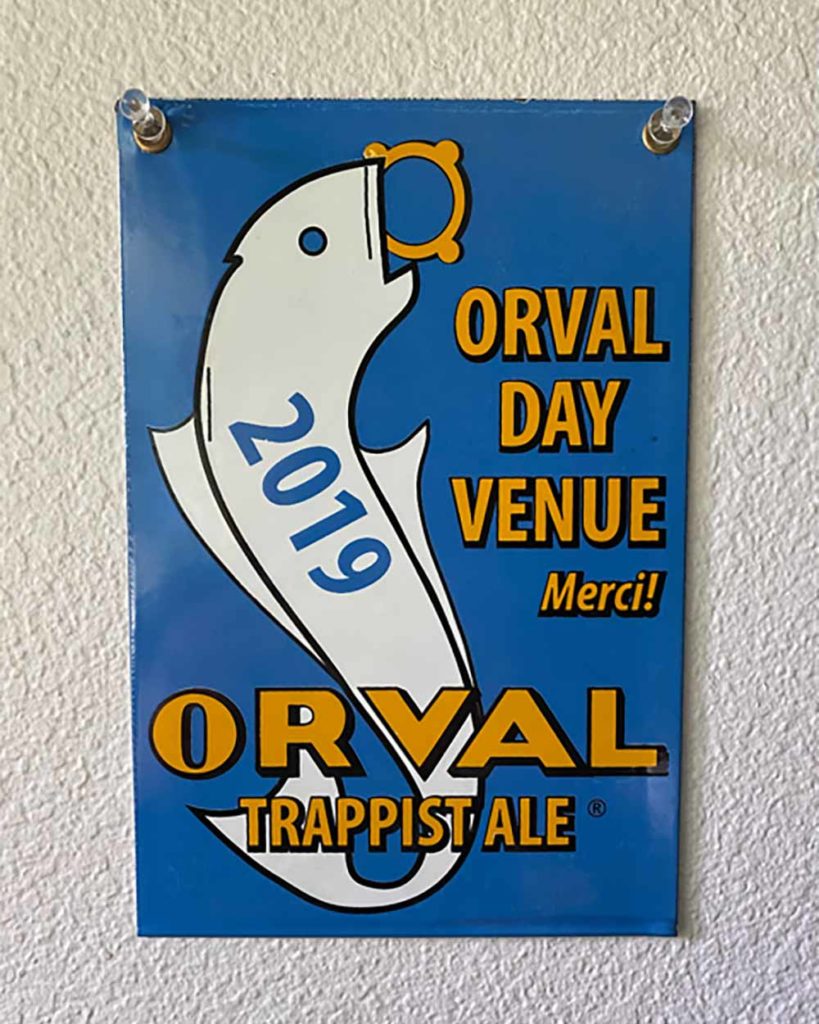
Photography courtesy of Tom Lyon
This year, Orval Day takes place on Saturday, May 21st, 2022. Merchant du Vin originally scheduled the holiday for late March. However, two years of worldwide lockdowns and international shipping complications meant Merchant du Vin couldn’t get enough imported in time.
But despite the hurdles and challenges, the show must go on!
For those interested in celebrating Orval Day, mark your calendars for May 21st, 2022. Check with your local bottle shop or craft beer bar to see if they are hosting an event. If you are celebrating at home follow these steps. First, grab your beer-clean Orval chalice. Second, gently pour until you have one centimeter of beer left in the bottle (per the instruction of the brewery). And last but not least, bask in the glory of this unique, Brett-y, dry-hopped wonder of Belgian craftsmanship.

